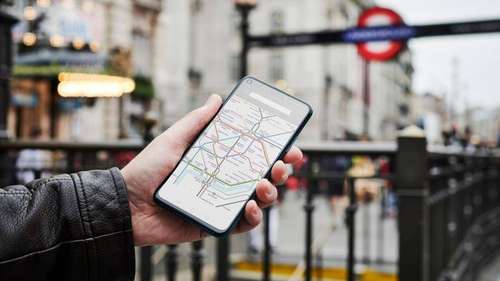Your phone is truly your best buddy when it comes to navigating an area.
In many ways, a smartphone is a traveler's best companion. It keeps us informed of the most recent events and enables us to keep in touch with loved ones while we are away.
The best cameras on today's smartphones make it simple to share holiday memories with loved ones back home. However, there are other additional, perhaps less well-known functions that are useful when traveling.
Get prepared
You can save all your important papers and identification cards on your phone with a little planning and preparation.
Keep all of your debit and credit cards, vaccination records, and plane passes in your phone's digital wallet.
Important documents and images should always be backed up, and if you have them stored on a cloud server, you may access them from anywhere. There are services like iCloud, Google Drive, One Drive, and others that don't care where in the world you are or what kind of device you are using. To read your content, all you need to do is log in.
The quality of cloud-based photo storage is improving. You can keep all of your memories in one location, which is a terrific idea.
Recently, Google Photos upgraded its app to make it neater and simpler to browse and share photos and albums.
Additionally, they've made it simpler to import any videos and photographs you might have stored elsewhere.
You may now quickly copy images from other services, digitize photos (or movies and film), or move photos from a camera using the new "import photos" option. Once you've gathered all of your images and videos in Google Photos, it's simple to edit, share, and create picture books with them.

Be offline ready
It is wise to have a few offline solutions in case, God forbid, you find yourself without a mobile signal or internet connection.
I believe that having offline access to maps is crucial, and you can use Google Maps offline. All you have to do is use an internet connection to get the necessary offline maps.
Australian campers and off-road adventurers would be wise to get one of HEMA's offline GPS guidance apps. They are excellent for organizing and completing remote adventure journeys.
You could also want to download a fantastic audiobook from Audible or your preferred podcast or playlist from Spotify to keep yourself engaged.
Get verbal
When you are on the move it can be much easier to use voice commands rather than keying questions into the phone via the keyboard.
Hey Siri, where is the nearest chemist? Hey Google, navigate to Trevi Fountain . . . or hey Google, translate to German, where is the railway station?
It’s as easy as that.

Maintain a travel log
There are numerous excellent speech-to-text programs that will handle all the tedious work for you if you enjoy keeping a travel journal.
Otter is one of the best. . . Open the app, then describe your surroundings as you move along. All of it is automatically converted to text by the software, making it simple to update afterwards. It can also be used to record discussions and interviews. You receive 600 minutes for free each month with the basic plan, and by upgrading to the pro plan, you may access more features.
Be careful
It's crucial to always take care of your health and safety while traveling. Also, the smartphone can be useful here.
Most smartphones come with a fitness tracker app that is useful for monitoring your step count, sleep patterns, and other useful health data. The ability to set up your medical ID and include information like medical problems, allergies, and medications in case of an emergency is possibly the most crucial. When your phone is locked, you can access your medical ID by tapping emergency and then medical ID.
For additional mobile application, read our blog about Apple Inc's new features for iPhones, iPads, and MacBooks are part of Apple’s next operating system release. A lot of the new features this year seem actually practical and can help you with your next travel.
